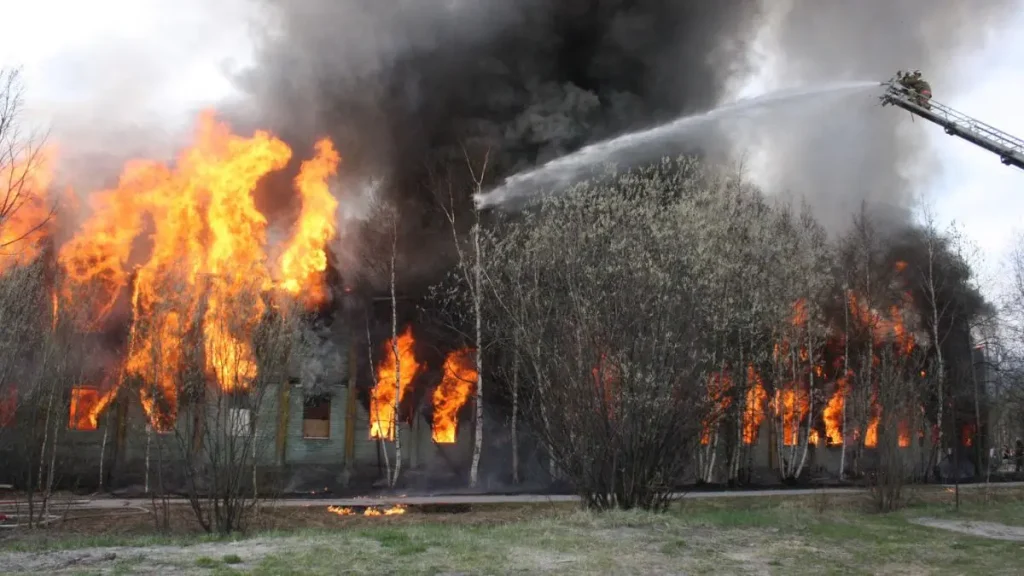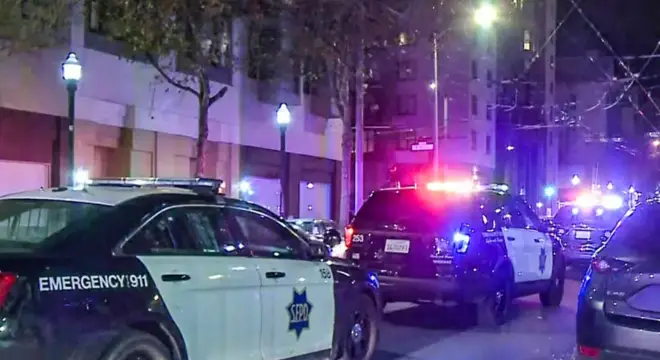Man Found Dead After Fire Causes Partial Collapse of Pennsylvania Home
It started just after midnight — the kind of quiet hour when most of the city is asleep. Fire crews were called to a home on Hillsboro Street in Pittsburgh’s Sheraden neighborhood after reports of flames tearing through the building. When firefighters arrived, the second floor was already burning hard, smoke pushing out into the cold night air.
I can almost picture what they saw — a structure that had turned into a wall of heat, neighbors standing outside in disbelief, phones out, sirens echoing down narrow streets. You never expect to wake up to that kind of chaos just a few houses away.
Within minutes, what began as a two-alarm fire became a fight for control. Firefighters moved fast to stop the spread, but the blaze had already consumed the heart of the building. This wasn’t just another late-night fire call — it was the kind that tests every ounce of training and calm under pressure.
What hits hardest about stories like this is how quickly an ordinary night can flip into disaster. You think about the people who lived there, the memories in those walls, and the teams risking their lives to keep the flames from jumping to nearby homes.
If you live in an older neighborhood like Sheraden, does this make you check your smoke alarms or think about how fast help could reach you if something went wrong?
Structure Collapses as Firefighters Battle Intense Flames

According to local station WTAE, the fight to control the fire turned dangerous within minutes. As crews tried to reach the upper floors, the structure gave way — the roof and third floor caved in, crashing down onto the second. It’s the kind of moment firefighters train for but never truly get used to.
You could feel the weight of that collapse — the sound, the shock, and the sudden silence right after. Even from the street, witnesses said it was clear the building wasn’t stable anymore. The fire had eaten through everything holding it up.
For the teams inside, it meant pulling back fast and regrouping under the harsh glow of emergency lights. In that chaos, there’s no pause to process fear — just instinct and trust in your crew. No injuries were reported, but it easily could’ve gone another way.
Sometimes, what doesn’t make the headlines is how these moments stay with first responders for years. Every collapse is a reminder that no call is routine.
Fire Watch and Flare-Ups Keep Crews on Edge
Even after the main flames were knocked down, the danger wasn’t over. In an official update shared by the Pittsburgh Bureau of Fire on Facebook, crews said they stayed through the early hours of the morning, keeping a “fire watch” over the site.
Two flare-ups hit before sunrise — one around 4:45 a.m., another just after 7 a.m. The firefighters quickly contained both, but that kind of persistence says everything about how unpredictable a structure fire can be.
If you’ve ever seen one of these aftermath scenes, you know it’s not quiet — it’s smoke, wet debris, and constant vigilance. They wait for the smallest glow or crackle to reignite. That’s why fire crews never really “leave” a scene until they’re sure it’s done breathing.
It’s easy to underestimate how exhausting these follow-up hours can be — not physically, but mentally. Watching a place smolder back to silence takes patience most of us never have to test.
Similar incidents have shaken other communities too — like the early morning fire that destroyed a home in Adams County, leaving one resident displaced despite firefighters’ quick response.
Man Found Dead Amid Demolition Work on Sunday
By Sunday afternoon, the mood around the scene had shifted from urgency to dread. Crews brought in heavy machinery to begin tearing down what was left of the building. That’s when they found him — the man believed to have been inside when the fire broke out.
Officials said his body was discovered just before 3 p.m., buried under what used to be the upper floors. For more than 24 hours, police and firefighters had hoped the reports were wrong — that maybe he’d made it out, maybe he was somewhere safe. But as the demolition continued, that hope ended quietly in the dust.
There’s a stillness that follows discoveries like that. You think of the person’s last moments, the calls that never got answered, the family waiting for news. These stories don’t need dramatic words — they carry their own weight.
For everyone watching, it’s a reminder of how fragile those few minutes can be when fire spreads faster than you can react.
Drones and Demolition Crews Used in Search and Recovery
Police later confirmed that drones were deployed during Saturday’s search when they first suspected someone might be trapped inside. The technology gave them eyes on the unstable structure without putting rescuers at risk.
It’s something I’ve seen more fire departments turning to — using drones not just for fire mapping, but for spotting heat pockets or missing people. Even with all that tech, sometimes you just can’t see through what’s left of a building.
When the drones failed to locate anyone, demolition became the only safe way forward. The moment heavy equipment arrived, the area went quiet again — fewer sirens, more focus. Crews worked methodically, piece by piece, until the truth revealed itself.
It’s a hard kind of closure, but it’s closure nonetheless.
If you like staying updated on verified local safety alerts and real-life rescue stories like this, there’s a WhatsApp channel that regularly shares such on-ground updates from across Pennsylvania — it’s a quick way to stay informed without scrolling endless feeds.
Cause of Fire Remains Under Investigation
As of now, investigators haven’t said what caused the blaze. The Fire Marshal’s office is handling the case, but details are still developing. It could take days — sometimes weeks — to find out whether it started with wiring, a heater, or something completely unexpected.
If you’ve ever lived in one of these older Pittsburgh homes, you know how fragile old wood and wiring can be. One spark, one unseen fault, and it’s gone before anyone smells smoke.
For now, officials have simply called it “under investigation.” What matters is that the story doesn’t end here — it becomes a lesson, a warning, and hopefully, a push for better safety checks in neighborhoods like this one.
Have you ever checked how many working smoke alarms you actually have? Because stories like this aren’t just news — they’re wake-up calls for all of us.
Fire investigations sometimes uncover shocking details — just like the Sterling home fire case where a deadly blaze later turned out to be linked to an insurance scheme.
Pennsylvania’s Rising Fire Fatalities — A Bigger Picture

When you zoom out from this single tragedy, it’s hard to ignore the pattern. Pennsylvania has seen a steady rise in residential fire deaths this year — many in older homes, where aging wiring and heavy wood framing make small sparks deadly fast.
As someone who follows local reports, I’ve noticed the same type of headlines repeating — late-night blazes, partial collapses, trapped residents. The common thread? Outdated structures and limited early detection.
State data earlier this year pointed to dozens of fire-related deaths across Pennsylvania — a number that should unsettle anyone living in similar conditions. It’s not about statistics; it’s about how preventable many of these losses actually are.
Every headline like this one is a signal that home safety checks aren’t just a box to tick — they’re a life-or-death habit.
If you’re reading this from anywhere in the state, when was the last time you tested your alarms or checked your extension cords? Maybe tonight’s the night to do it.
Community Response and a Hard Lesson in Safety
By Sunday evening, the Sheraden community had started to gather — not in crowds, but in quiet gestures. Someone left flowers near the caution tape. Neighbors posted condolences on local Facebook groups. You could feel the ache of it, even if you didn’t know the man who died.
That’s something I’ve always admired about Pittsburgh — when tragedy hits, people show up for each other. Firefighters might leave the scene, but the community doesn’t.
The Bureau of Fire has already reminded residents to check their smoke detectors and heating systems as winter approaches. It’s advice that sounds simple — until you realize how many homes ignore it.
You and I might scroll past safety reminders every week, but maybe this story makes you pause for a second. One small action — changing a battery, unplugging an old heater — could keep another headline from being written.
Not every fire ends in tragedy — in Sheboygan, a dog was rescued after a fire destroyed a home, reminding us how community and quick action can still make a difference.
Final Thoughts
Officials have confirmed that this case remains under active investigation. Updates will be shared as more details are released by the Pittsburgh Bureau of Fire and Pittsburgh Public Safety.
For now, the site on Hillsboro Street stands quiet — a reminder of how fast a home can become history.
This story is still unfolding, and when investigators find what caused it, we’ll all be one step closer to understanding how to prevent the next one.
Until then, stay aware, stay safe — and maybe check your alarms tonight.
You can explore more local fire updates and safety stories on our Home Incidents section — each one is a reminder that awareness can save lives.
Disclaimer: Details in this report are based on official statements and verified local sources available at the time of publication. The investigation into the fire’s cause is ongoing, and updates may change as new information emerges. Readers are advised to follow local authorities or Pittsburgh Public Safety for the latest confirmed updates.


